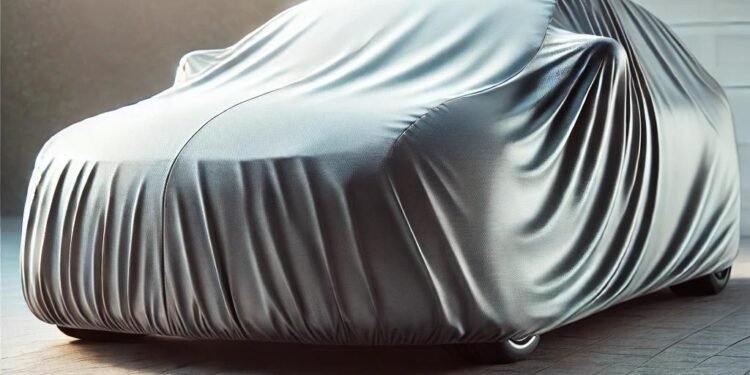Alright, so you’re on the hunt for a Chevrolet car cover. It seems like a no-brainer, right? Just pick one that fits and call it a day. But before you make a snap decision, let’s break down what you must look for to get the perfect fit for your Chevy. After all, not all car covers are created equal, and choosing the wrong one can do more harm than good. Let’s dive into what you need to know to protect your ride correctly.
How Do I Know What Size Car Cover I Need?
First off, let’s talk about sizing. Getting the right size car cover is essential, and it’s not just about guessing or picking a “one-size-fits-all” option. You’ll need to know your Chevrolet’s dimensions—length, width, and height.
Most manufacturers offer sizing charts, so once you have those measurements, you can cross-check them against the options available. For example, a Chevrolet Camaro will need a different cover than a Silverado, so this isn’t a one-size-fits-all deal.
If you want to play it safe, always look for a custom-fit cover for your car’s model. Custom covers ensure a snug fit, meaning they won’t flap in the wind or expose parts of your vehicle. They’re tailored to follow the curves and edges of your car, providing better overall protection.
If your car cover is too loose, it can act like sandpaper, rubbing against the paint and causing scratches. Too tight, and you risk it tearing or not fitting correctly.
How Should a Car Cover Fit?
A good fit is more than just having the right size—it’s about how the cover wraps around your vehicle. Throwing on a car cover should sit snugly against your car’s surface without any sagging or gaps.
You don’t want excess material pooling at the corners or edges, as that can lead to flapping in the wind, which can scratch the paint. Worse, a loose-fitting cover can let in dust, dirt, and moisture, defeating the whole purpose of using one in the first place.
Pay attention to details like elastic hems or drawstrings that can help secure the fit around the base of your Chevrolet. Elastic hems should stretch evenly around the bottom of the car for a snug, windproof fit.
Some covers also come with straps or buckles to hold them securely in place, especially in windy conditions. If you’re going for a custom-fit cover, you won’t need to worry as much about these details since they’re designed to match your car’s exact dimensions.
And don’t forget about the mirrors—some covers come with mirror pockets for a more tailored fit around those tricky areas.
Should a Car Cover Be Tight or Loose?
Regarding car covers, you want the fit to be just right—think snug but not suffocating. A car cover that’s too tight can put unnecessary pressure on your vehicle’s paint job, especially around the edges and corners. Over time, this can lead to rubbing or even minor abrasions on your finish.
Conversely, a too-loose cover exposes your car to the elements. Wind can cause a loose cover to flap against your Chevrolet’s surface; trust me, you don’t want your car cover acting like a sandblaster.
The sweet spot is a snug fit that sits closely on your car’s body without being stretched to its limit. It should cover all the contours of your Chevrolet but still be easy enough to remove and put back on without a struggle.
This is where custom-fit covers shine. They’re designed to follow the exact shape of your specific model, so you won’t have to deal with the awkward bunching or stretching that comes with universal options.
Also, consider covers with reinforced grommets for tie-downs or built-in straps. These features help keep the cover secure without needing to be too tight, especially in windy conditions. Think of it like this: snug enough to stay in place but not so tight that it pulls at the seams or your car’s paint.
How Long Do Car Covers Last?
Now that we’ve covered the fit let’s talk about longevity. How long can you expect a car cover to last? The answer depends on several factors, like the material, how often you use it, and the weather conditions it’s exposed to.
Use a high-quality Chevrolet car cover from durable materials like multi-layer fabrics or UV-resistant polymers. With regular use, it can last anywhere from 3 to 5 years. Of course, the environment plays a significant role in wear and tear. If you live in a place with intense sun, harsh winters, or heavy rain, your cover will likely degrade faster than if you used it in mild conditions.
Cheaper, single-layer car covers—especially those you’d pick up on the fly—might only last a year or two, particularly if exposed to harsh elements. They might seem like a quick fix, but investing in a high-quality cover will save you money in the long run. A well-made cover is designed to resist UV rays, repel water, and provide better protection against debris. And, as a bonus, they tend to come with warranties, so you’ve got some peace of mind.
So, while it might be tempting to choose a budget option, remember that a quality Chevrolet car cover will last longer and do a much better job of keeping your ride in pristine condition.
Which Material Car Cover is Best?
Choosing the suitable material for your Chevrolet car cover is crucial. Not all covers are created equal, and the material can make the difference between a cover that protects and barely lasts a season. So, what should you look for?
Multi-layer fabrics are a solid choice if you’re looking for all-around protection. These covers are made of multiple layers, each serving a purpose—some for UV protection, some for water resistance, and others for breathability. A multi-layer fabric is a good bet if your Chevrolet spends much time outside battling the elements. These are designed to handle heavy rain, snow, and intense sun, all while allowing moisture to escape so your car doesn’t develop mold or mildew.
Polyester or Acrylic Covers are also popular, especially for outdoor use. These lightweight but durable fabrics often come with a special UV-resistant coating. This is the material you’ll want if you live in a sunnier climate. It’s built to resist fading and degradation from constant sun exposure, so your Chevrolet stays protected year-round.
Fleece-lined covers are an excellent option for those more concerned with protecting the paint job from scratches. These covers have a soft inner lining that cushions your vehicle’s finish, making them ideal for long-term storage. However, they’re not the best for harsh outdoor conditions since they’re typically not as weather-resistant.
Waterproof vs. Water-Resistant: Here’s a tip—don’t confuse waterproof with water-resistant. Waterproof car covers can trap moisture underneath, leading to rust or mold if water sneaks in. Water-resistant covers, on the other hand, repel water while still allowing the car to breathe. So, if you live in a rainy area, use a water-resistant and breathable cover.
In short, the best material depends on your situation. Use multi-layer or polyester covers with UV and water-resistant properties for complete outdoor protection. If your Chevrolet spends more time in a garage and you’re worried about dust and scratches, fleece-lined or softer options might be your go-to.
Conclusion
Finding the perfect Chevrolet car cover doesn’t have to be a guessing game. The right cover can make all the difference in keeping your car looking as good as the day you drove it off the lot. Start by understanding the size you need and ensuring the cover fits snugly but not too tightly.
A well-fitted cover prevents unnecessary wear on your vehicle’s paint and keeps your ride protected from the elements.
Consider your environment when choosing a material—multi-layer covers are ideal for outdoor use, while softer, fleece-lined options may be better suited for garage storage.
While a quality car cover might cost you a bit more upfront, its protection will save you money in the long run by preventing damage, scratches, and fading.
So whether you’re covering up your daily driver or a weekend cruiser, choosing the right Chevrolet car cover is an investment worth making.
It’s not just about keeping your car clean; it’s about protecting your investment and ensuring your Chevrolet stays in top condition for years.












